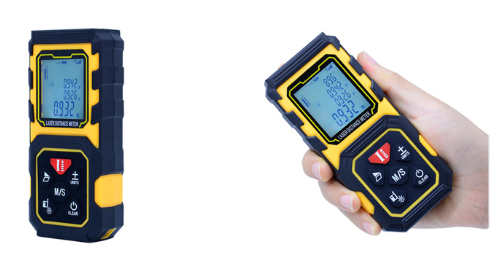The measurement effect of a laser distance meter in actual application is roughly determined by four factors, including the size of the target object, the shape of the target object, air quality, and sunlight intensity. If the air quality is high, nearly any laser distance meter can measure the distance of highly-reflective objects, such as a road sign. It is common to hear complaints that a distance meter fails to reach the setting parameter of 1,000m in actual application. Such a problem is frequently mentioned in the laser distance meter industry. In fact, it happens mainly because of users' unfamiliarity with the operating principle of laser distance meters and their inadequate communication with manufacturers.
Long-range laser distance meters available in the market, or the so-called laser rangefinders for sale on Tool.com, have been developed according to the principles of pulsed lasers to measure the distance with the time for light waves of a laser beam to travel back and forth. Such pulse lasers have the following characteristics:
- The larger the target object is, the more light waves it reflects. The more easily they are received by the laser distance measure, the better the distance measurement effect is.
- The flatter the target object's surface is, the more light waves it reflects. The more easily they are received by the laser distance finder, the better the distance measurement effect is.
- The lighter color the target object has, the better light waves are reflected, and the more easily they are received by the laser distance meter. Dark objects absorb light because darker colors reflect fewer light waves. Given that black absorbs much light, wearing black clothes makes us hotter in summer than being dressed in white ones.
- If the air is foggy or filled with a heavy dust-haze, the number of light waves returned is considerably hindered and affects the measurement distance. The higher the air quality, the better the distance measurement effect for the laser distance meter.
- Considering the impact of strong light on measurement, laser distance meters developed based on the pulse laser principle must measure with a 905nm laser. Such wavelengths overlap with the 905nm waveband of sun rays. If the sunlight is glaring, it will interfere with the reflected light waves and narrow the laser distance meter's measurement range.
Calibration of Laser Distance Meters
Calibration refers to a series of operating procedures carried out to ensure the quantitative values indicated by the laser distance measure or other measurement systems or the measurement values represented by the measured object correspond to standard measurement values.
The first step of calibrating the laser distance meter is to check the apparatus. This examination includes carrying experimental operation on the laser distance meter and recording all experimental data generated by operations. Don't forget that as many experiments as possible should be conducted to rule out problems. The last step is to compare data. The laser distance meter's accuracy is calculated by the difference between the standard value and the experiment value. After all steps are taken, the laser distance meter has been thoroughly calibrated.
 Calibration Standards for Distance Meters on Tool.com
Calibration Standards for Distance Meters on Tool.com
- National calibration specifications for measurement devices.
- The part concerning metrology verification regulations.
- Methods specified by Tool.com.
- Select the methods newly published by reputed technical organizations or relevant scientific books and magazines.
- If national calibration specifications for measurement apparatus are not available, international, regional, or national technical standards or technical specifications openly published by customers can be followed.
- Apply self-complied files for apparatus calibration.

